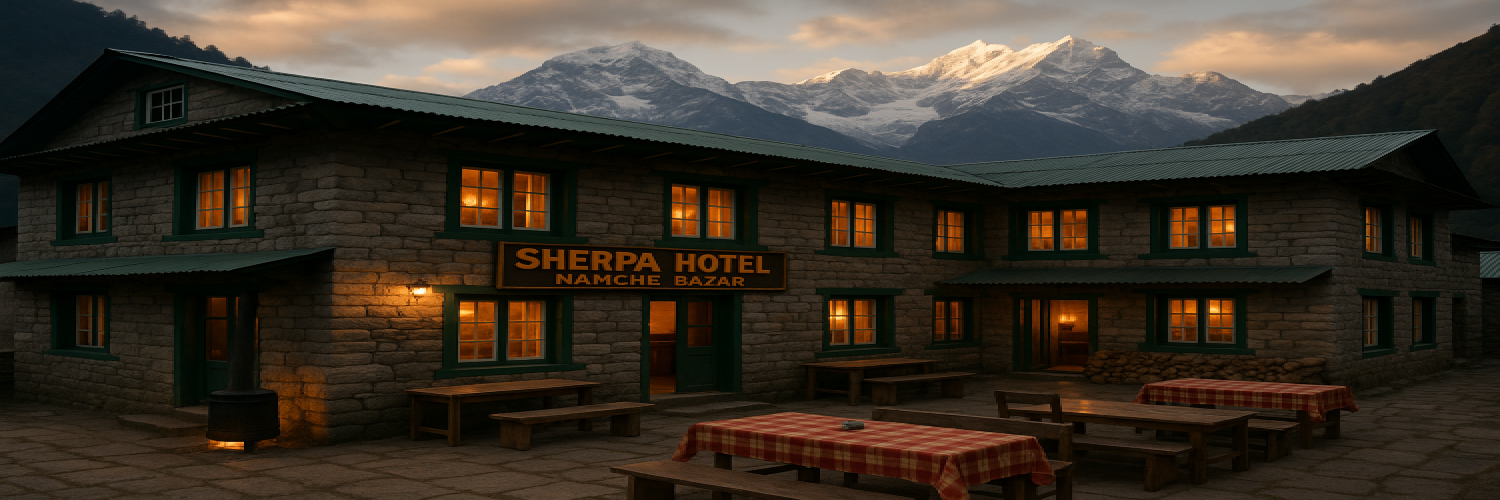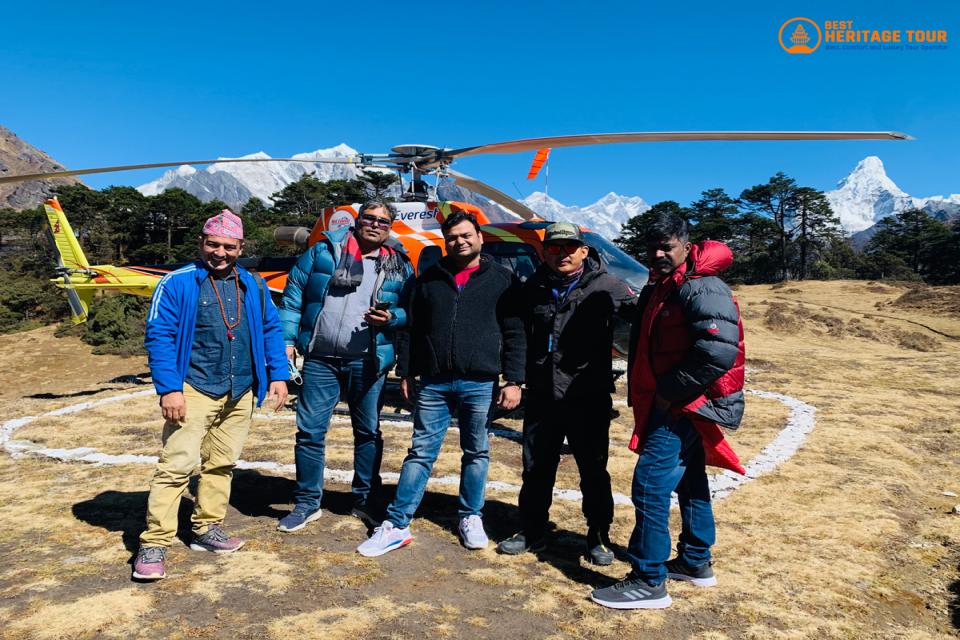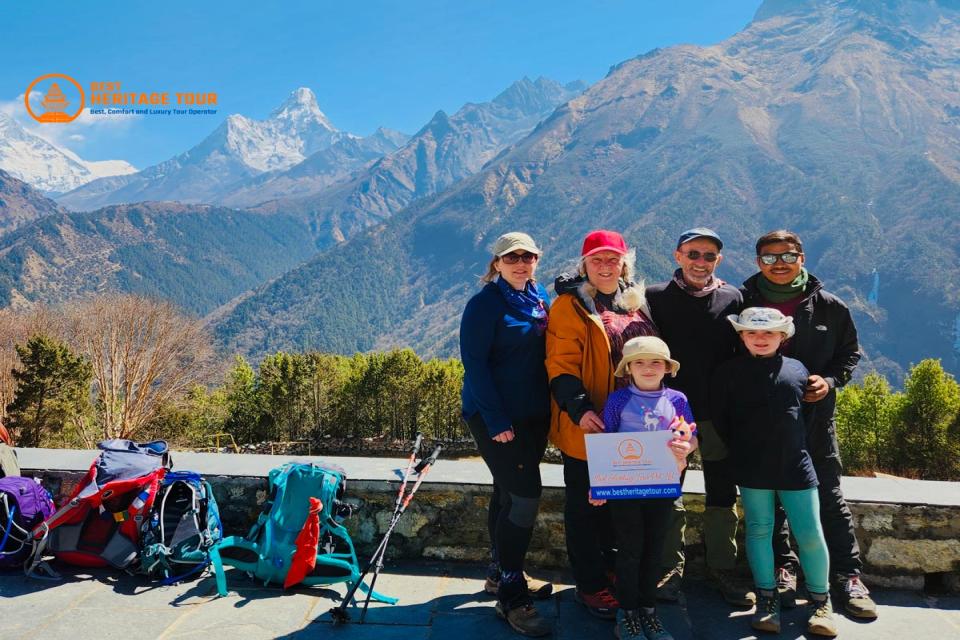Nestled high in the Himalayas, where prayer flags dance in the cold mountain wind and the scent of juniper smoke drifts through stone villages, lives one of the most resilient and culturally rich communities of Nepal- the Sherpas. Known globally for their mountaineering prowess and spiritual devotion, the Sherpa people also have a lesser-known but equally remarkable treasure: their cuisine.
Sherpa cuisine is deeply rooted in the Himalayan environment, influenced by Tibetan flavors, and shaped by centuries of subsistence living in high altitudes. It’s hearty, nourishing, and steeped in Sherpa culture and hospitality. Whether you’re trekking through Namche Bazaar, visiting remote mountain monasteries, or simply curious about Himalayan food, exploring Sherpa dishes is an unforgettable journey for your taste buds and your soul.
Let’s take a deep dive into the essential Sherpa dishes you must try in Nepal and the cultural stories they carry.
A Taste of Sherpa Culture: Food Beyond Flavor
Before we dive into individual dishes, it’s important to understand the cultural context of Sherpa cuisine. Food in Sherpa communities isn’t just about sustenance; it is woven into the fabric of daily life, religious rituals, seasonal festivals, and social gatherings.
Living in extreme altitudes, the Sherpa people traditionally relied on what could be grown, traded, or preserved. Their dishes are warming and energy-packed perfect for the cold, thin air of the mountains. Common ingredients include potatoes, barley, buckwheat, yak meat, spinach, and locally grown herbs. Unlike the fiery curries of the lowlands, Sherpa food is milder, focusing on deep earthy flavors, with plenty of protein and carbohydrates for endurance.
Now, let’s explore the essential Sherpa dishes you should try when traveling through Nepal especially in Sherpa heartlands like Namche Bazaar, Khumjung, and the Everest Region.
1. Rildok - The Sherpa Potato Soup
Rildok is a classic Sherpa comfort dish made from hand-mashed potatoes that are shaped into dumpling-like blobs and cooked in a light but hearty broth. It may look humble, but it’s a soul-satisfying dish, especially in colder months.
Potatoes are central to the Sherpa diet they grow well in high altitudes and are incredibly versatile. Rildok is often flavored with garlic, onions, and a bit of local butter or oil, creating a warm, creamy texture.
Cultural Note: Rildok is commonly served during family gatherings or as an offering during winter festivals. Its simplicity reflects Sherpa humility and connection to the land.
2. Shyakpa - Traditional Sherpa Stew
Shyakpa, sometimes called Sherpa stew, is perhaps the most iconic Sherpa dish. It's a thick, rich soup made with hand-cut flat noodles, root vegetables like radish and carrots, greens, and yak or beef meat.
The broth is typically slow-cooked with Himalayan herbs and sometimes enriched with yak butter, creating a deeply comforting dish that sustains trekkers and locals alike.
Where to try it: You’ll find shyakpa on the menu in teahouses throughout the Everest region, particularly in Namche Bazaar, the Sherpa capital of Nepal.
3. Butter Tea (Po Cha) - The Mountain Elixir
No Sherpa meal or trek is complete without a steaming cup of Po Cha, also known as butter tea. This salty, fatty tea is made by blending strong black tea with yak butter and salt, then churning it until frothy.
While it may be an acquired taste for some, it’s an essential part of Sherpa hospitality. The high fat content gives instant energy and helps retain body heat crucial in freezing altitudes.
Cultural Note: Guests are traditionally served multiple cups of butter tea, and it’s considered polite to keep refilling their cup.
4. Chhurpi - Himalayan Yak Cheese
Chhurpi is a fermented yak cheese that comes in two types: soft and hard. The soft chhurpi is used in stews, curries, and momos, while the hard chhurpi almost like a Himalayan chewing gum can last in your mouth for hours.
Rich in protein and calcium, chhurpi is one of the most popular Sherpa snacks, often carried by trekkers as an energy boost.
Fun Fact: Hard chhurpi is so dense that it’s often used as a natural toothbrush!
5. Momos - Sherpa Dumplings
While momos are now widespread across Nepal, Sherpa-style momos have their own unique identity. Typically made from wheat flour dough and filled with minced yak meat, vegetables, or cheese, they’re steamed or fried and served with a mildly spicy tomato and sesame dipping sauce.
Sherpa momos are heartier and more rustic, often hand-rolled and filled with chhurpi, spinach, or cabbage, reflecting local ingredients and traditions.
Cultural Note: Momos are often made during celebrations and shared with neighbors and guests as a gesture of community.
6. Thukpa - Sherpa Noodle Soup
Another Tibetan-influenced but distinctly Sherpa dish is thukpa- a noodle soup made with homemade noodles, vegetables, and either yak meat or egg.
Warm, slightly spicy, and very filling, thukpa is the perfect high-altitude lunch or dinner. Sherpa versions tend to use fewer spices and more local greens, making it soothing and wholesome.
7. Khapse - Festival Fried Bread
Khapse is a fried dough snack traditionally made during Sherpa and Tibetan festivals like Losar (Tibetan New Year). They come in a variety of shapes and sizes- some resembling braids or flowers and are slightly sweet with a crisp texture.
These are often offered to monks, deities, or as part of home altars, then shared with loved ones.
Cultural Note: Making khapse is a communal activity in Sherpa households- grandmothers, aunts, and children all pitch in to shape and fry them together.
8. Chhang - Sherpa Barley Beer
If you’re seeking a traditional drink, chhang (or tongba) is a lightly alcoholic brew made from fermented millet or barley. Served warm or at room temperature in a wooden vessel with a bamboo straw, it’s the drink of choice at Sherpa gatherings.
Chhang is central to Sherpa hospitality offered to guests, monks, and even to the spirits during rituals.
9. Phalgi - Buckwheat Pancake
Phalgi is a Sherpa-style pancake made from buckwheat flour. It’s earthy, dense, and usually eaten with a dollop of butter or a drizzle of honey. Some versions are savory and served with spicy pickles or soup.
As buckwheat grows well in higher elevations, phalgi reflects the Sherpa’s deep connection to their environment.
10. Tingmo - Steamed Sherpa Bread
Tingmo is a soft, fluffy steamed bread that’s perfect for scooping up stews like shyakpa or lentil soups. It’s light, spongy, and slightly sweet.
While tingmo originates from Tibetan cuisine, the Sherpa people have adopted it widely in everyday meals.
11. Gyuma - Yak Blood Sausage
Not for the faint of heart, gyuma is a traditional yak blood sausage made with yak meat, barley, and blood. Rich in iron and protein, it’s highly valued for its warming, sustaining properties in harsh climates.
Cultural Note: Gyuma is often eaten during winter festivals or after slaughter season, when no part of the yak is wasted.
12. Sel Roti (Fusion Influence)
Though sel roti is primarily a Nepali dish, many Sherpa families have incorporated this sweet rice-based ring-shaped bread into their festival menus. It’s often served during Dashain and Tihar in Sherpa villages with mixed communities.
Where to Explore Sherpa Cuisine: Namche Bazaar and Beyond
Namche Bazaar, the de facto capital of the Sherpa world, is not only the gateway to Everest but also a hotspot for authentic Sherpa food. Whether you stop in at a family-run teahouse or are invited into a local home, you’ll be treated to warm, delicious meals filled with tradition.
Villages like Khumjung, Thame, Pangboche, and Phortse also offer rich culinary experiences often prepared with ingredients grown or raised just steps from the kitchen.
The Role of Food in Sherpa Culture
Sherpa cuisine is a mirror of their culture practical, rooted in nature, humble yet deeply meaningful. Meals are often shared communally, and many ingredients hold ritual significance.
-
Barley and buckwheat are used in religious offerings.
-
Chhang is poured as libation before new journeys.
-
Khapse and butter tea are staples in ceremonial gatherings.
Understanding this context transforms a simple dish into a cultural encounter-one that nourishes not just the body, but also the traveler’s curiosity and soul.
Ready to Savor Authentic Sherpa Dishes in the Himalayas?
Whether you're trekking the Everest Base Camp trail, exploring Namche Bazaar, or delving into Sherpa culture, don't miss the chance to explore this unique culinary world. The richness of Sherpa dishes goes far beyond flavor-it’s a legacy of mountain life, faith, and family.
Plan Your Culinary Adventure with Best Heritage Tour
Best Heritage Tour offers immersive travel experiences that let you explore Sherpa culture, cuisine, and community with authenticity and care.
Phone: +977-1-5551234
Email: info@bestheritagetour.com
Website: www.bestheritagetour.com
Join us to savor the hidden flavors of the Himalayas.
Author: Best Heritage Tour
Date: 27th May, 2025







